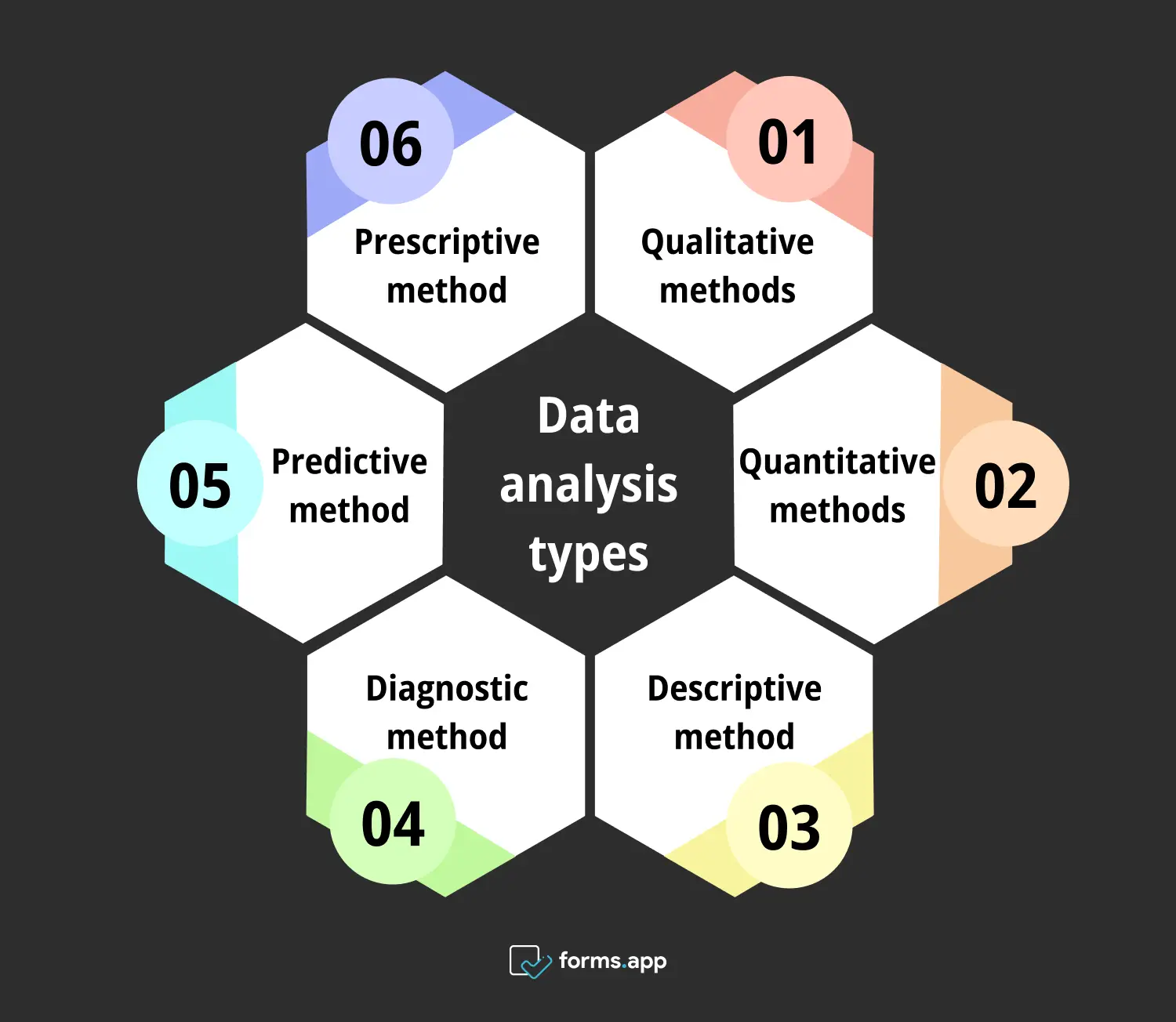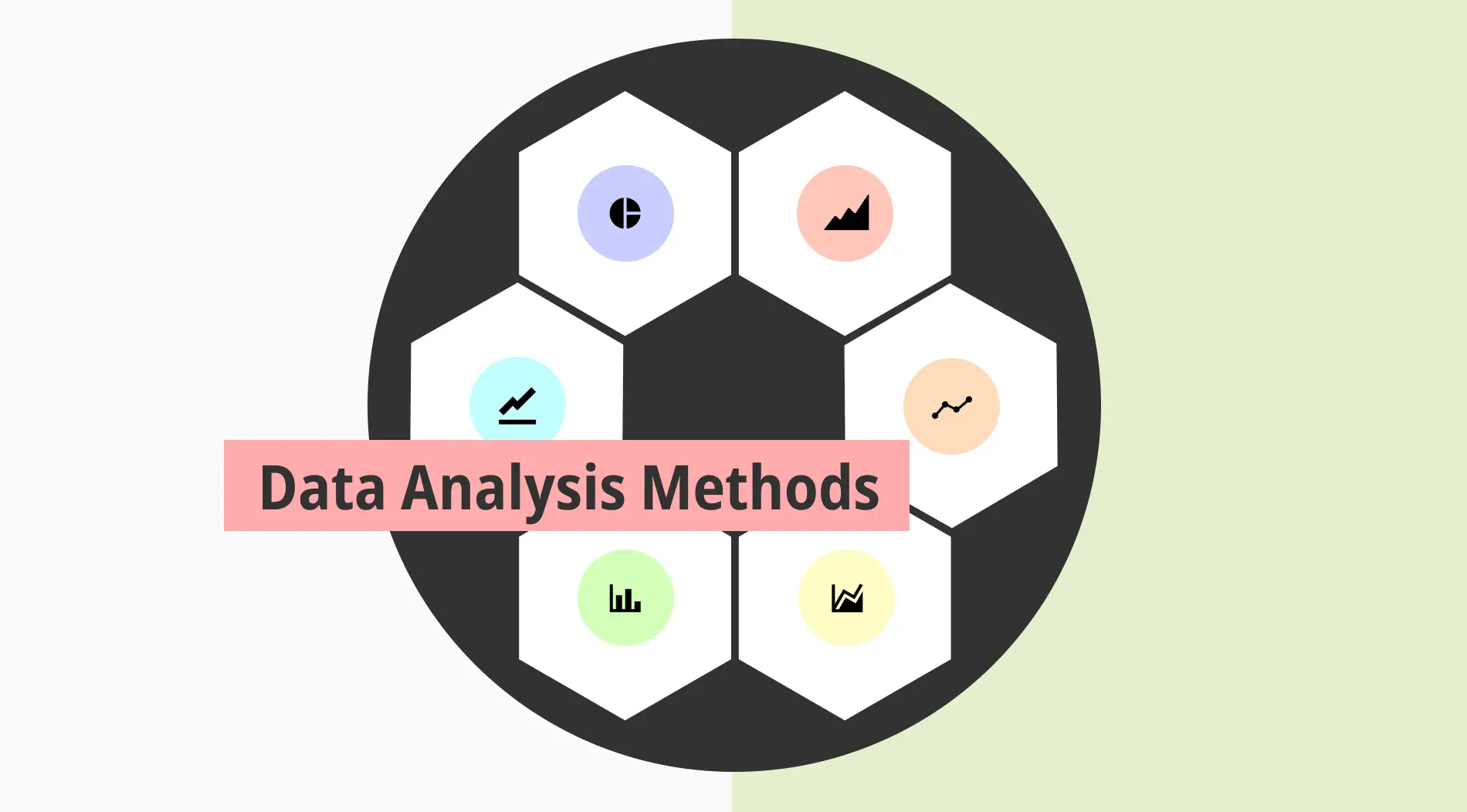The data analysis process can initially seem daunting for those who are not experts in the field. However, with the right understanding of the nature of data analysis methods in qualitative research and quantitative explorations, you can navigate this process with confidence and control.
These methods vary greatly, from basic to complex, and this article will empower you with knowledge about them, showing how you can benefit from their application.
What is a data analysis method?
A data analysis method is a technique used to analyze any content systematically to derive insightful information.
All methods have a basic procedure one has to follow, such as gathering data, cleaning it, transforming it, and modeling it to reach an outcome. Some methods, like descriptive analysis, are basic, but some, like prescriptive analysis, are complex. However, there isn't such a thing as one being superior to the other because all methods have some usage in their own way.
When to use a data analysis method
The best time to perform data analysis is when the conditions and requirements are most suitable. In other words, the appropriate time may vary depending on your needs and available resources.
For example, important milestones for your business, such as when you want to open a new branch, launch a new product model, or enter a new market in another country, are perfect times to use analysis. Generally, you can utilize a data analysis method:
- When you want to test your hypotheses
- When you need a particular information to get into action
- When you want to see patterns and relationships between variables
- When you need data visualizations to inspect a situation thoroughly
Why to use a data analysis method
It may seem like an exaggeration to those who do not know the benefits of using data analysis methods in the most efficient way, but choosing a perfect method suitable for your research question will satisfy you in terms of results. If you are still not satisfied, here are a few reasons why you should use a data analysis method:
- To make informed decisions and to reach meaningful insights.
- To examine the data in detail and reveal valuable information, find patterns, and discover anomalies.
- To examine commercial activities and situations such as marketing, human resources, and logistics with evidence.
- To produce immediate solutions in emergency situations, such as risk management.
- To support, test, or challenge known information and findings.
Data analysis method types & examples
Your first step in understanding data is to choose the appropriate approach. These approaches have their own characteristics; some produce better results with numerical data, some with subjective data. The most common and basic data analysis methods in research are presented below so that you can decide which one to choose from this variety.

Types of data analysis
1. Qualitative methods
A qualitative analysis is used to reveal relationships, meanings, and patterns in non-numerical data. It is frequently used in areas such as sociology, psychology, and education, where numerical data is limited or impossible. Because of the intense examination of subjective thoughts, it discovers information that is not visible by focusing on sources such as transcripts, videos, and images. Common qualitative data analysis methods are:
- Thematic analysis, where you uncover recurring themes
- Content analysis, where you discover the existence of a specific content according to its numerical value
- Discourse analysis, where you investigate a speech/language usage to uncover communication and power dynamics
- Narrative analysis, where you get information directly from the experience of people
✏️ Example: Analyzing the political speeches of a country you will invest in is a possible research subject. In this way, you can learn what situations your business or organization may face in the short and long term.
2. Quantitative methods
A quantitative analysis is used to reveal relationships and patterns and measure variables using numerical data. The existence of numerical data (and directly proportional to the reliability of the data resources) allows analyses to produce results that are close to real-world situations.
Therefore, it is widely used in fields such as physics, chemistry, engineering, and economics, which require a lot of mathematics. Quantitative data analysis methods are diverse; the main ones are:
- Regression analysis, where you examine the relationship between dependent and independent variables
- Time series analysis, where you investigate a situation at specific time intervals
- Inferential statistics, where you reach a result through a population sample
✏️ Example: Analyzing monthly or seasonal sales data is a possible market research subject to predict future cloth sales trends. By using time series analysis, you can uncover seasonal patterns and understand the supply-demand situation.
3. Descriptive method
Descriptive analysis is basically used to summarize data for further usage. It helps you to understand the content of the data roughly. For this purpose, it reveals the salient features in the data by using various techniques: measures of central tendency (mean, median, mode) and dispersion (range, variance, standard deviation).
✏️ Example: It is especially suitable for summarizing numerical values so it can be used to prepare monthly sales reports and to measure students' academic success.
4. Diagnostic method
Diagnostic analysis is the data analysis you perform to find out the cause of a situation. It is perfect for learning the background of an event and detecting anomalies. To reveal patterns, it can be used to compare the differences between data sets and examine the correlation of variables.
✏️ Example: If you encounter a situation where sales suddenly drop or increase, you naturally want to know the reason. With diagnostic analysis, you can quickly examine the data and get to the root of the reason.
5. Predictive method
Predictive analysis is an advanced analysis method used to predict possible situations by examining historical data(situations that happened). Since predicting the future is a topic that many sectors care about, its application area is quite wide. It reveals patterns by using machine learning algorithms and statistical techniques and simulates the next steps accordingly.
✏️ Example: By examining the shopping habits of customers in the last year, you can use it to predict future customer churn and take precautions accordingly.
6. Prescriptive method
Prescriptive analysis is the most complex and final stage analysis method. Not only are future predictions made, but possible actions are also suggested. These data-driven decisions are made mainly by using artificial intelligence. Thus, the decision-making process works faster.
✏️ Example: If you support the recommended section of your online sales website or application with a machine learning algorithm, you can offer products that may interest your customers based on their shopping history.
Frequently asked questions about the data analysis methods
Data analysis is a vast sea, and its methods are scattered around it. So, all questions about data analysis methods can't be answered; however, here, you can find frequently asked questions about the data analysis methods.
You should follow a series of steps to analyze any data:
- Define your research objective
- Gather and clean the data
- Explore data using statistical analysis
- Select a method and apply it
- Interpret the final outcome
- Get actionable insights
You can use various sources to collect data:
1. Observations: The simplest approach to data collection is systematic observation. It is subjective and limited in what it offers to the information observed. However, behaviors that emerge from natural observations offer a more powerful opportunity for discovery than self-reported information such as surveys and interviews.
2. Interviews: In this approach, which is generally based on one-on-one question and answer, the statements of the individuals are essential. It enables psychological and sociological information to be obtained in cases where observations are insufficient, but the sample size in this approach is quite small and time-consuming.
3. Surveys: Surveys that can be done face to face, online, or on paper allow you to reach a lot of people quickly. However, the preparation of the surveys and the quality of the questions affect the quality of the results, so they should be well prepared.
4. Documents: Any document, book, letter, post, table, or graph related to your research is considered a document and can be used for analysis. It is especially useful for finding historical data, but the quality of the result varies depending on the number of documents available.
Each data analysis method has its own techniques. These vary depending on the type of data and the purpose of the research. For example, descriptive analysis frequently uses measures of central tendency, measures of dispersion, and frequency distribution techniques.
Exploratory data analysis utilizes techniques such as scatter plots, summary statistics, and cluster analysis. Predictive analysis, on the other hand, performs analysis using techniques such as time series analysis, machine learning models, forecasting methods, and regression models.
Data analytics is directly related to the type of data, and various approaches are used accordingly. The simplest and most common is descriptive analysis, which provides a summary of the data. Later, more complex analyses such as inferential, exploratory, predictive, and prescriptive analyses can be performed after descriptive analysis to provide more results and find patterns.
Conclusion
In conclusion, data analysis methods are potent tools that help transform raw data into insight perfectly. Some of them allow for more comprehensive research, while others allow modest research. This article guides you in choosing the most suitable one among so many methods more easily. The article starts with the definition of the data analysis method and continues by explaining when and why you should use the methods.
Then, it provides you with information by explaining the methods of data analysis in research with examples. You have completely accessed the theoretical information with which you can perform data analysis!
Atakan is a content writer at forms.app. He likes to research various fields like history, sociology, and psychology. He knows English and Korean. His expertise lies in data analysis, data types, and methods.



